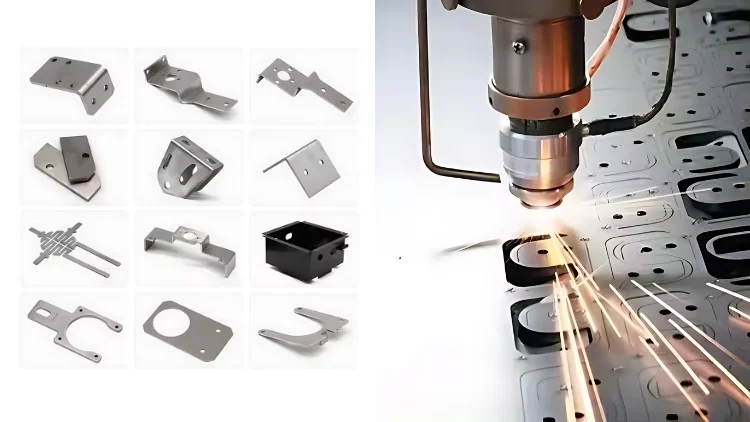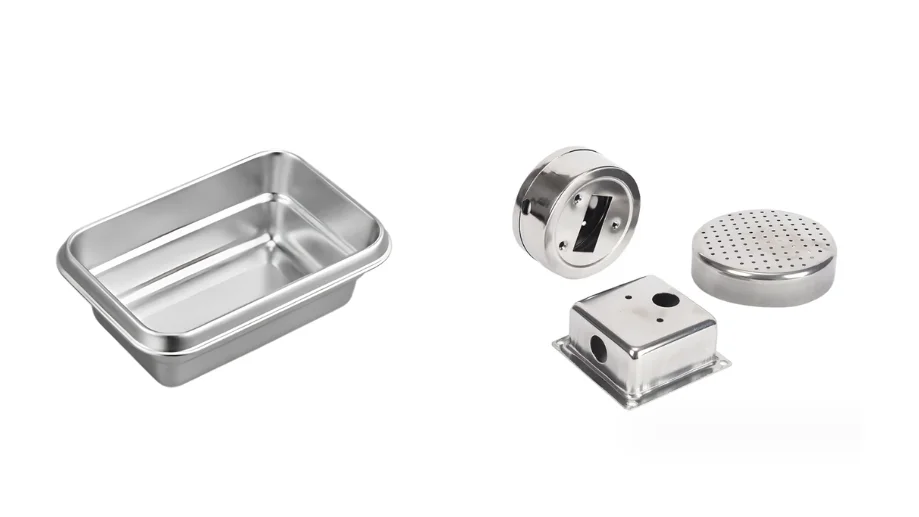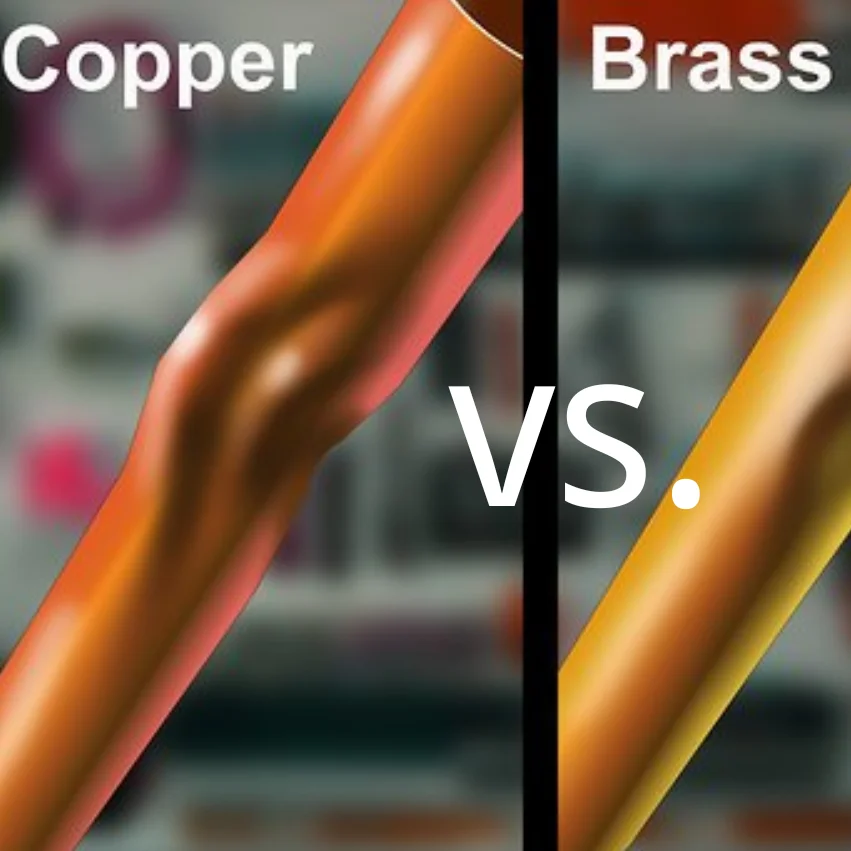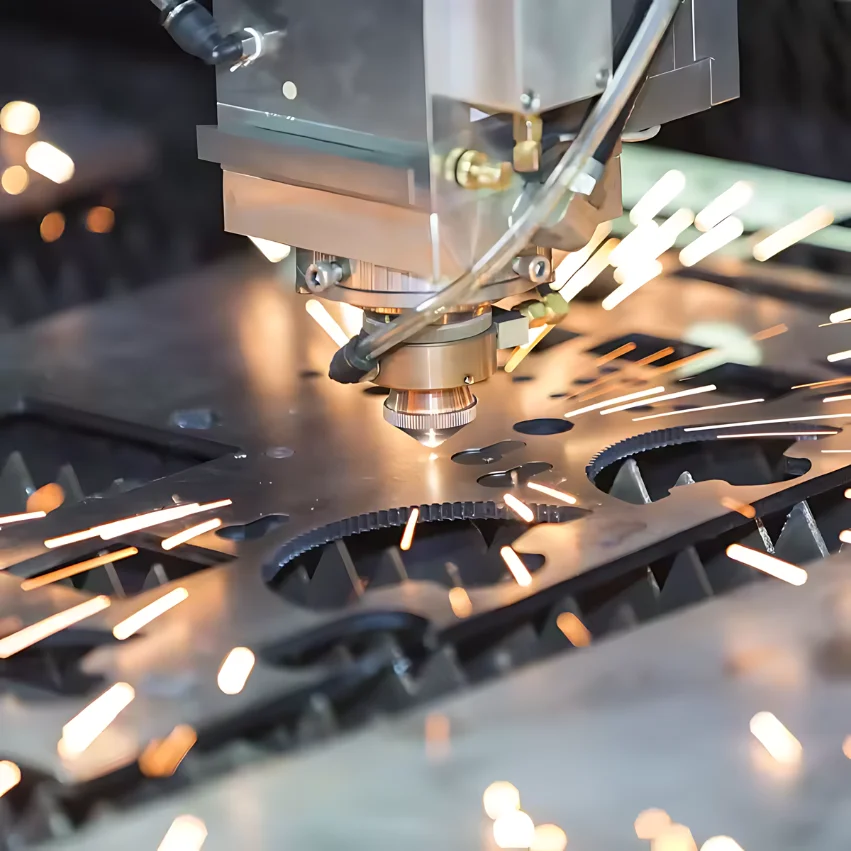Sheet metal laser cutting is a thermal cutting process in which a beam of light (laser) is directed at a workpiece to melt or vaporize the material until the desired shape is obtained.
This article will take you through some of the information you may need to know before choosing a sheet metal laser cutting processing service.
What Is Sheet Metal Laser Cutting?
Sheet metal laser cutting is the use of high-energy laser to melt, burn, or vaporize metal to achieve a precise and clean cutting effect. In addition, laser cutting technology is characterized by high precision and high efficiency, and is widely used in automotive, aerospace, electronics, and other fields.
For small businesses, opt for laser cutting services rather than investing in a laser cutting machine as this will save costs and provide quality service to customers. If you have enough money, you can also consider investing in a laser cutting machine.
Whether you invest in a laser cutting machine or use a service is up to you personally. If you need professional laser cutting services, please contact Shanghai Widetop Hardware Co.
What Are the Advantages of Sheet Metal Laser Cutting?
Let’s take a look at the advantages of laser cutting sheet metal.
- High Precision and Accuracy: Typically, laser cuts parts to tolerances of up to 0.2 millimeters.
- Flexibility: It is easy to cut a wide range of metal types and thicknesses without changing tools.
- Speed: Laser cutting is much faster than traditional mechanical cutting techniques, especially when cutting complex patterns or fine details.
- Material Versatility: Laser cutting technology is capable of handling a wide range of metal materials such as stainless steel, aluminum, mild steel, alloys and specialty metals.
- Automated Process: As a computer-controlled process, laser cutting minimizes human error and can be accurately repeated.
What Are the Disadvantages of Sheet Metal Laser Cutting?
Here are a few disadvantages of laser cutting of sheet metal:
High Initial Cost. The initial investment in laser cutting technology can be high compared to other cutting methods, which can be prohibitive for small businesses.
Metal Thickness Limitations. In most manufacturing industries, laser cutters cut aluminum sheets up to 15 mm thick and steel sheets up to 6 mm thick. As a result, they are usually more effective on thinner materials.
Maintenance Requirement. Equipment requires regular maintenance to ensure performance and safety, which increases operating costs.
Check out more information on the pros and cons of laser cutting here.
The Sheet Metal Laser Cutting Process
Laser cutting is a process that utilizes a laser beam to melt metals and alloys to create a smooth, sharp cut.
There are three main methods of laser cutting sheet metal.
Sublimation Cutting
Laser beam sublimation cutting vaporizes the material by means of a laser. Instead of melting like other laser cutting processes, the material changes from a solid to a gas, a process known as sublimation.
Like melt cutting, laser beam sublimation cutting uses an inert gas to blow the vapors of the material out of the kerf. As a result, there is no oxidizer on the blade. It is commonly used to cut organic materials such as wood, leather, and textiles.
Fusion Cutting
The laser beam fusion cutting process uses inert gases, primarily nitrogen. The low reactive process gas continuously vaporizes the material cutting gap. The inert gas prevents oxidation of the molten material at the cutting edge but does not interfere with the cutting process.
Laser beam fusion cutting is suitable for cutting flat thin sheets of aluminum and stainless steel.
Flame Cutting
Laser beam flame cutting utilizes a flammable gas, oxygen, to inject and remove molten material. In this process, the laser first heats the workpiece to a sufficient temperature to melt the material, which then reacts with the oxygen to spontaneously combust.
Flame cutting is particularly suitable for cutting soft steel and some refractory materials such as ceramics.
What are Metal Types Suitable for Laser Cutting?
The special properties of different metals make them suitable for laser cutting. Here’s a quick overview of each of these metals and their physical and chemical properties:
Aluminum
Aluminum alloy is lightweight, flexible, ductile, and resistant to corrosion, making it suitable for a wide variety of industrial applications. Check laser cutting aluminum.
- Melting point: 1,220 degrees Fahrenheit
- Tensile strength: 90-140 MPa
- Specific gravity: 2.70

Copper
Copper is an excellent material for thermal conductivity. It has good toughness and ductility and is easily soldered.
- Melting point: 1,984 degrees Fahrenheit
- Tensile Strength: 210-360 MPa
- Specific gravity: 8.96
Mild Steel
Mild steel is a popular material for laser cutting. It is affordable, durable, and has excellent weldability. It has a 0.3% carbon content, which is different from the brittleness of high-carbon steel.
- Melting point: 2,600 to 2,800 degrees Fahrenheit
- Tensile strength: 370-500 MPa
- Specific gravity: 7.85
Stainless Steel
Stainless steel has good corrosion resistance and is well suited for laser cutting of all types of stainless steel. It has high strength and good resistance to oxidation.
- Melting point: 2,550 to 2,750 degrees Fahrenheit
- Tensile strength: 515 MPa
- Specific gravity: 7.93

Galvanized Steel
By evenly covering the surface of the steel with a thin layer of zinc, this thin zinc coating not only enhances the steel’s resistance to corrosion but also maintains it for a longer period of time in humid environments. As a result, galvanized steel is used in a wide variety of industrial applications, especially in equipment and structural components that require high corrosion resistance.
- Melting point: 2,600 to 2,800 degrees Fahrenheit
- Tensile strength: 330-505 MPa
- Specific gravity: 7.85
Gold
Dense and flexible, reflecting luster on every side. The metal is malleable and extremely tough. Whether forged into bracelets, necklaces, or intricate decorative pieces, a variety of shapes can be created using Gold metal.
- Melting point: 1,948 degrees Fahrenheit
- Tensile strength: 120 MPa
- Specific gravity: 19.32
How To Choose a Good Laser Cutting Service
When choosing a laser cutting service, it is important to consider several factors that affect the quality of the work and the efficiency of the service before making an informed choice. Here are three essential tips to help you choose a reliable laser cutting service:
Assess the Technology and Equipment
Make sure that the service provider applies the newest laser cutting techniques and maintains its facilities. Advanced machines can process complex cuts with high accuracy, and can work efficiently with a variety of materials and thicknesses. Check to see if they offer the kind of laser cutting you want, like carbon dioxide, fiber, or Nd: YAG.
Evaluate Their Expertise and Experience
Look for service providers who are experienced in laser cutting and have a proven track record in their particular industry. Experienced service providers tend to improve the quality of cuts and minimize errors.
Analyze Turnaround Times and Costs
Compare how different services handle project timelines and pricing. A good laser cutting service company offers competitive pricing while maintaining high quality work. Also, consider their ability to meet deadlines.
Best Laser Cutting Service
Shanghai Widetop Hardware Co., Ltd with over 20 years of experience in the industry. We are able to process materials from 0.001 inches to 0.3 inches in thickness.
We have successfully served more than 300 corporate clients such as Voith, Thermo Fisher, QVC, and many others.
Feel free to browse our website for more information or to get the Request for Quote form.




